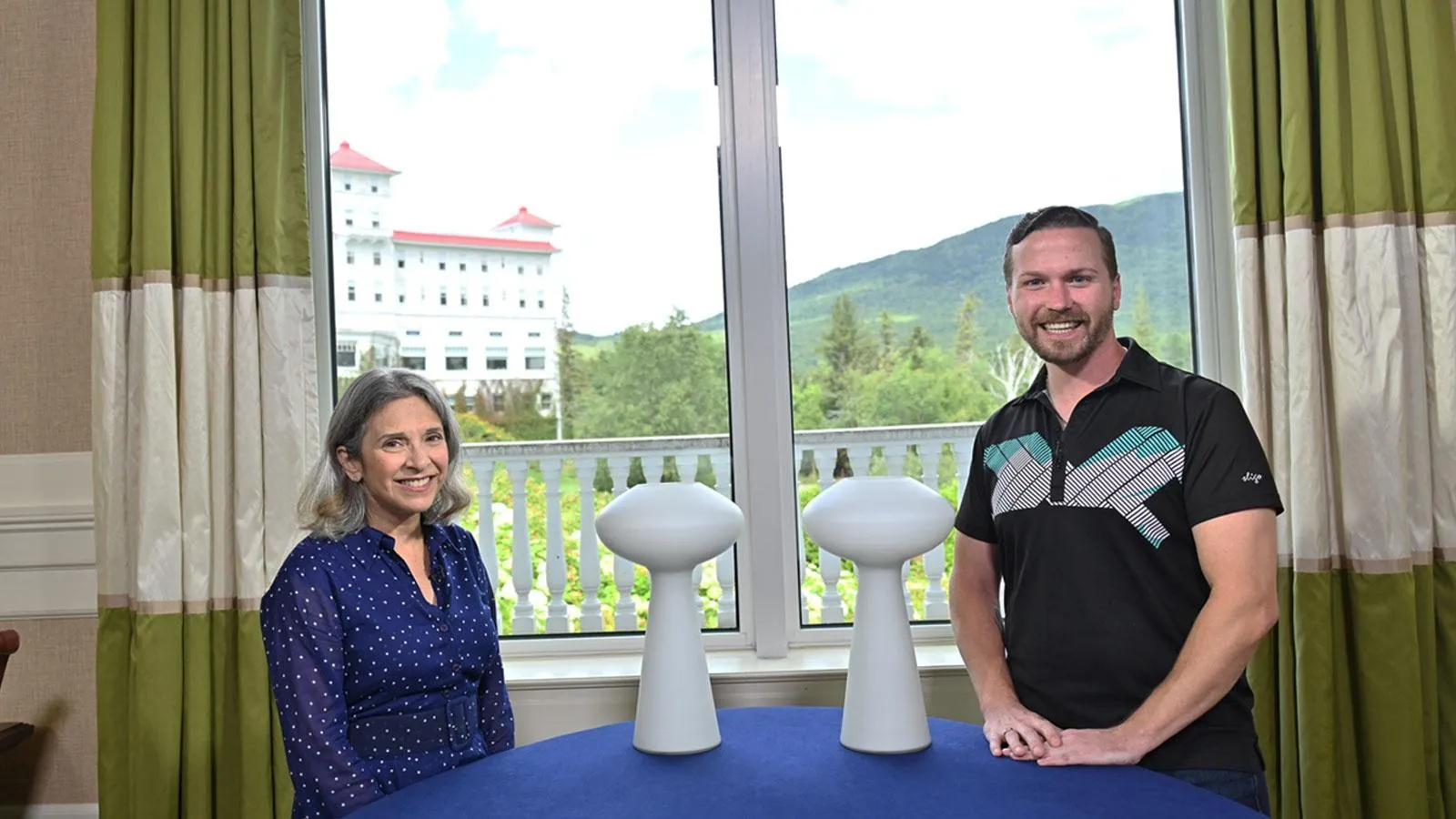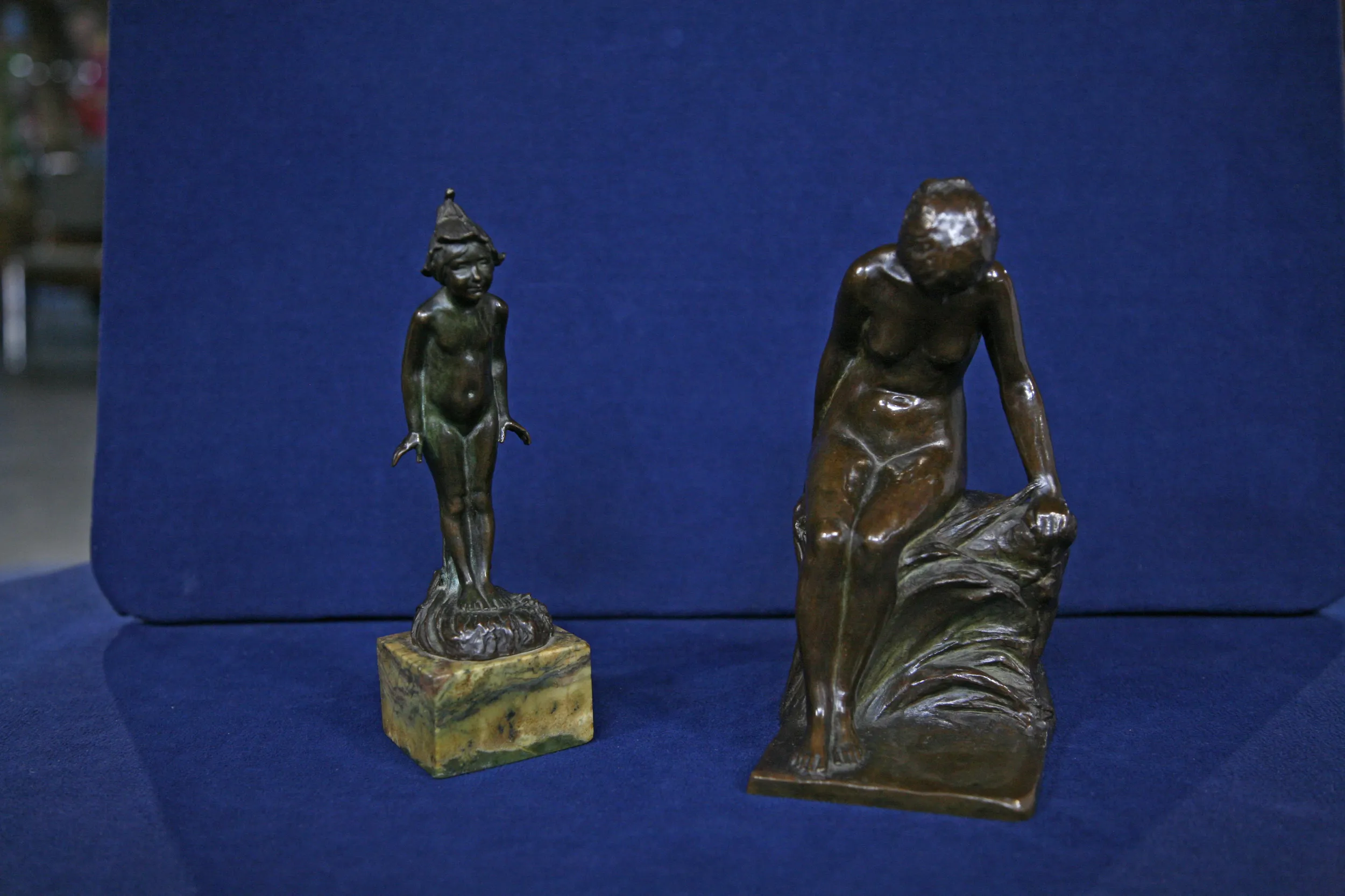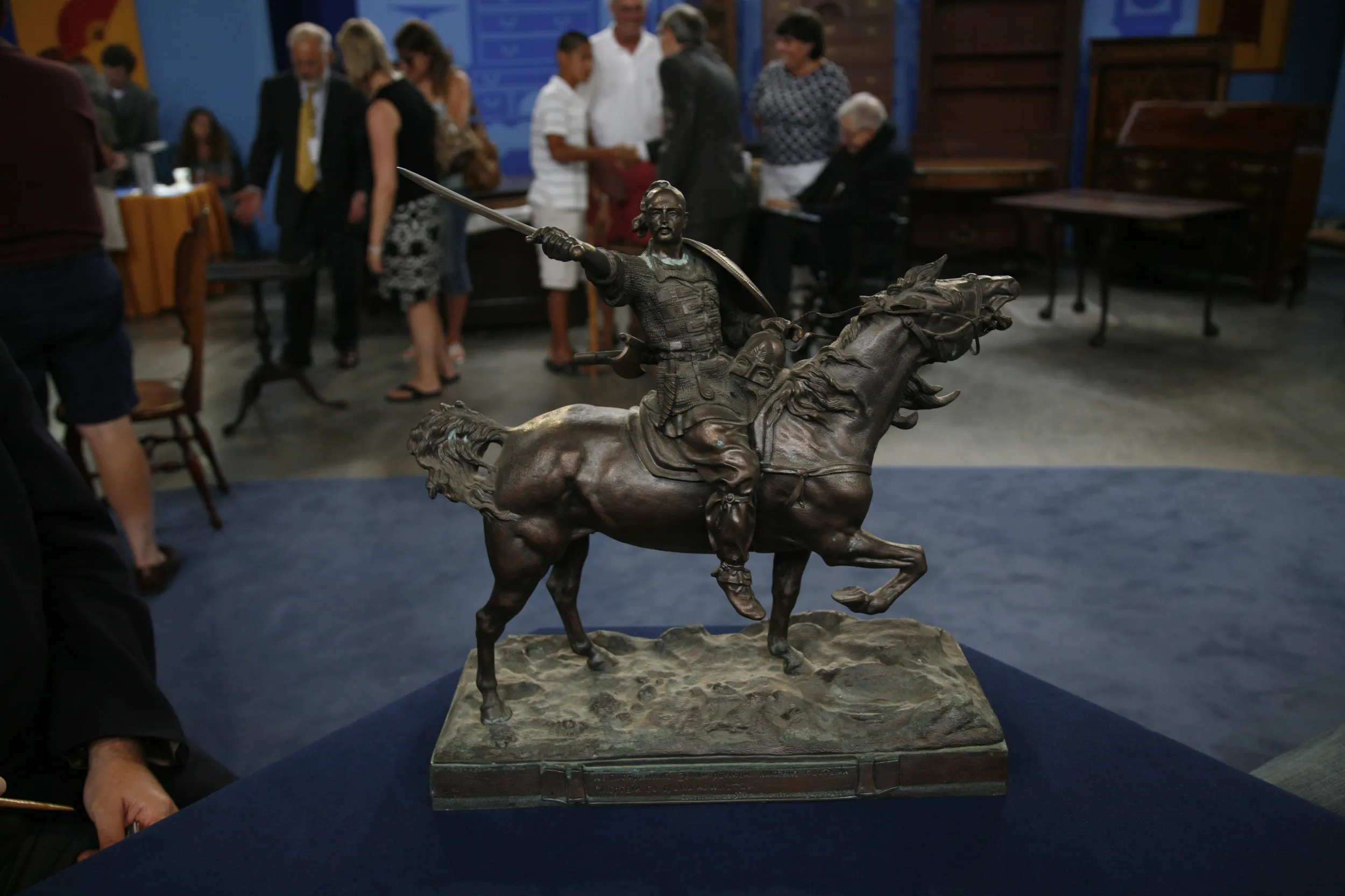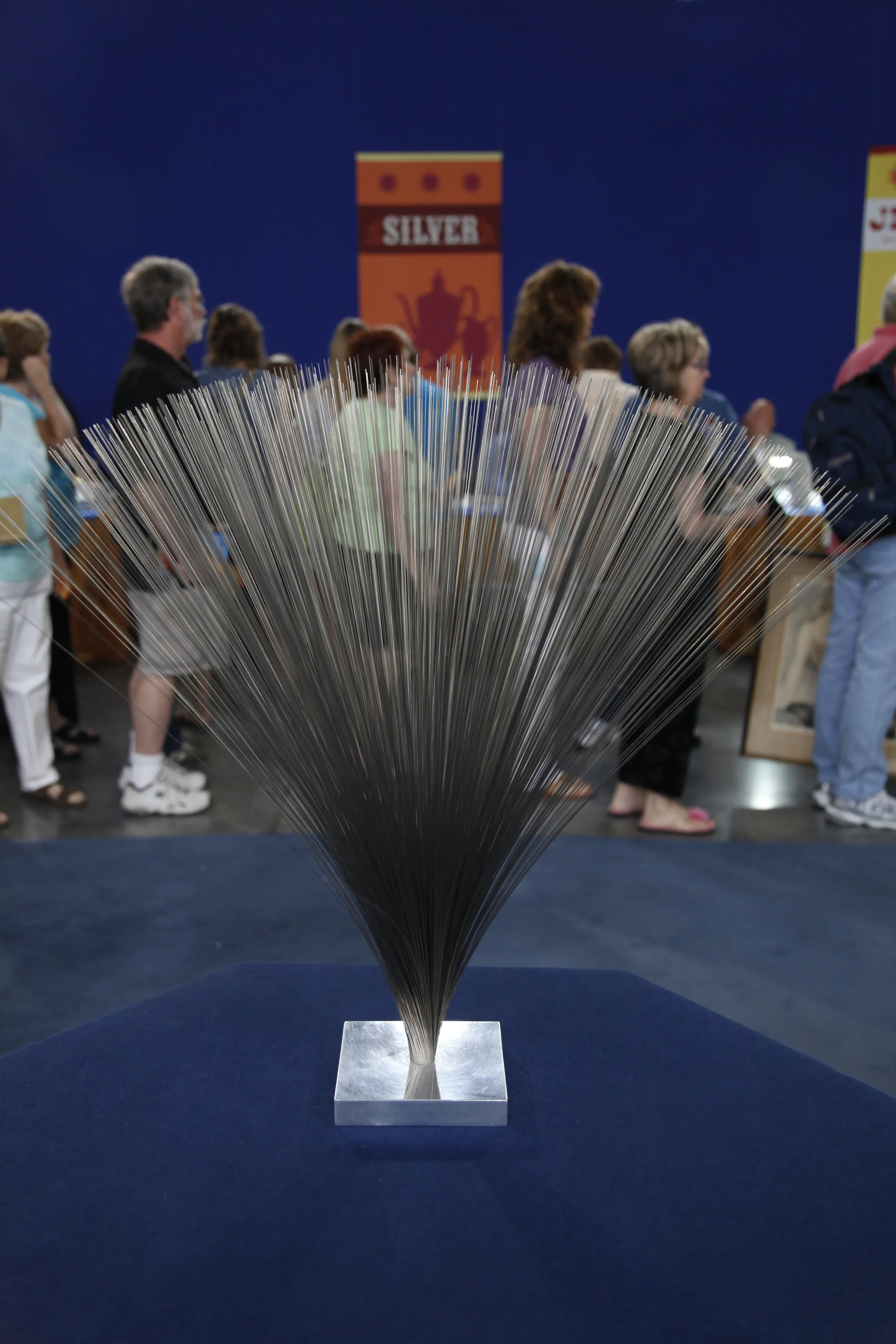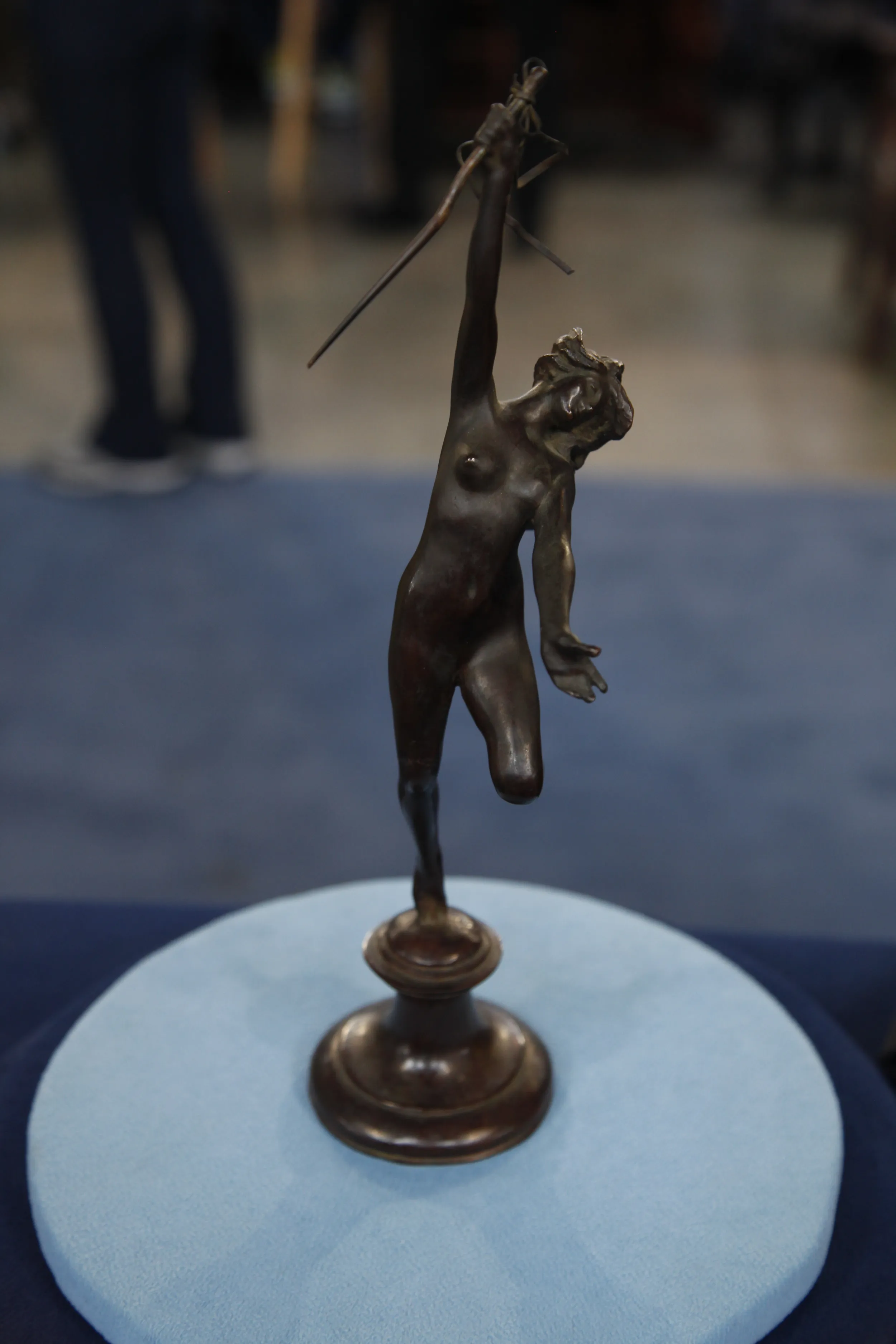GUEST: I purchased this about a year ago. I paid $20, and I found it through, like, a local buy-and-sell app. And the woman selling it was getting a divorce. She said that her husband used to own a gallery in the Boston area, and I think it's the gallery that's listed at the, on the back of this piece. But I'm not sure. The only other thing that she said was that she thought it might be worth more than $20. The funny part was that I didn't like it when I saw it in person, or I was a little disappointed, 'cause in the picture, it looked like a painting, and it turns out it's more of, like, a sculpture, like a 3D effect. But it has grown on me a lot. I do really like it now.
APPRAISER: So you've brought in kind of an interesting piece of, um, op art, so optical art, um, by an artist whose name is Mon Levinson. And that is lab, you know, identified on the back. Um, and it, you know, it sort of comes across as sculpture because it is, you're right, it is 3D. It's made out of, um, plexiglass, probably an acrylic. And it's interesting in that it's composed of a lot of lines on different layers...
GUEST: Yeah.
APPRAISER: ...that sort of have that, almost like a kinetic look. When you, you know, walk by it or look at it from different angles and tilt your head, it's going to give you a slightly different view almost as if it's moving.
GUEST: Yeah.
APPRAISER: Mon Levinson was an, uh, American artist born in 1926. Didn't start off his life, I think, intending to be an artist. He want, had a, a Ivy League degree in economics. He took an active role in creating all of these himself. So he learned, um, the techniques for the materials and did all of the...
GUEST: Wow.
APPRAISER: ...sort of design and assembly, which was unusual for this time period.
GUEST: Yeah, that's cool.
APPRAISER: It's 1964. "Black Quiet Plane 1a." He started off in the early 1960s with a group of artists who, almost, most of whom are better known than he is today. His work was included in a really important exhibition at the Museum of Modern Art in New York in 1965.
GUEST: Okay. Yeah.
APPRAISER: And he had probably close to 30 gallery and museum sort of solo shows.
GUEST: Mm-hmm.
APPRAISER: So I think he sort of worked less and less and sort of fell from view for a lot of years. There are series very similar to this in design
that were screenprinted.
GUEST: Oh, okay.
APPRAISER: So he had, um, a version that was included in a portfolio of prints. You paid around $20.
GUEST: Yeah.
APPRAISER: Those screenprints, at auction, you can get for probably around $200.
GUEST: Yeah.
APPRAISER: And those are, you know, re, released in a series of 200.
GUEST: Okay. Yup.
APPRAISER: This is a one of a kind.
GUEST: Okay.
APPRAISER: If you were to see this in a gallery, in today's market, you probably see it priced at around $12,000.
GUEST: Okay. (laughs) I'd say I did good for $20. (laughs)
APPRAISER: I'd say you did really...
GUEST: I was hoping it would be at least $40, so that's good.
APPRAISER: Yeah, you did really well.
GUEST: That's great to know. Thank you so much.

